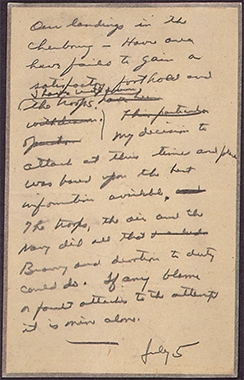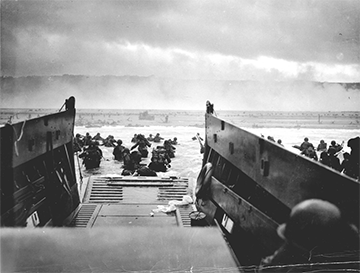Description
FOCUS QUESTION 4:
What major factors enabled the United States and its allies to win the war in Europe?
On June 6, 1944, the allied forces of the United States, the United Kingdom, Canada, free France, and Norway launched the single largest amphibious invasion in military history. It was an awe-inspiring undertaking and one of the most remembered events of the twentieth century. The American General Dwight D. Eisenhower, as supreme allied commander, coordinated an incredible amount of resources, supplies, and soldiers from different nations in order to launch the attack that would force Germany to defend its western flank, while at the same time it was fighting the Soviets to the east. And Eisenhower did this without showing his cards and tactics to the Nazis. That morning, President Roosevelt led the country in prayer. The president prayed for the soldiers and steadfast support from the American people. He ended with the following words.
“With Thy blessing, we shall prevail over the unholy forces of our enemy. Help us to conquer the apostles of greed and racial arrogances. Lead us to the saving of our country, and with our sister nations into a world unity that will spell a sure peace–a peace invulnerable to the schemings of unworthy men. And a peace that will let all of men live in freedom, reaping the just rewards of their honest toil.
Thy will be done, Almighty God.
Amen.”
Franklin Roosevelt, June 6, 1944
Loaded onto thousands of boats, and behind the machinery and firepower of the modern war, laid individual soldiers, who knew with almost perfect certainty that they and many of their friends would die on June 6, 1944, on a beach in northern France. Books and movies have tried to convey the scope and intensity of Operation Overlord with varying degrees of success. Indeed, this Primary Source Exercise attempts to allow more vivid and prompt reflection of that day, but the scope of World War II, much less the D-day invasion, is almost too immense to comprehend.
DOCUMENTS
Document 1 is the speech drafted by General Eisenhower, in case of D-day’s failure. Eisenhower took the responsibility for his decisions very seriously, as exhibited by the note he carried with him at all times during the planning.
Document 2 is statistical information on the D-day invasion. The numbers involved tell the story of how World War II was a war of the industrial era in all respects.
Document 3 is a series of photographs of scenes from the Normandy invasion.
INSTRUCTIONS
1. Read Chapter 26 of the textbook, with special attention to the introduction on pages 1055-1056, and The Allied Drive toward Berlin, pages 1082-1095.
2. Read Document 1, analyze the statistical information in Document 2, and look at the photographs in Document 3.
3. Answer the Focus Question.
DOCUMENT 1
Dwight D. Eisenhower, Draft of D-day Statement Should the Invasion Fail, July 5, 1944
Our landings in the Cherbourg-Harve area have failed to gain a satisfactory foothold and I have withdrawn the troops. My decision to attack at this time and place was based upon the best information available. The troops, the air and the Navy did all that bravery and devotion to duty could do. If any blame or fault attaches to the attempt it is mine alone.
Credit: National Archives
DOCUMENT 2
Statistics related to D-day Invasion at Normandy, June 6, 1944
Allied Forces: 156,000 Allied troops from the United States, the United Kingdom, Canada, free France, and Norway.
Areas of Invasion: the Allied code names for the beaches along the 50-mile stretch of Normandy coast targeted for landing were Utah, Omaha, Gold, Juno, and Sword. Omaha was the costliest beach in terms of Allied casualties.
The Armada: 5,000 ships and landing craft, 50,000 vehicles, 11,000 planes
Casualties (numbers represent total killed, wounded, missing, or captured):
United States – 6,603 (1,465 killed)
United Kingdom – 2,700
Canada – 1,074 (359 killed)
Germany – estimated between 4,000 and 9,000
Source: The National World War II Museum, The D-day Invasion At Normandy- June 6, 1944, Fact Sheet, http://www.nationalww2museum.org/media/normandy-dday-invasion-fact-sheet.pdf)
DOCUMENT 3
U.S. Coast Guard Collection, Army Troops Wade Ashore on “Omaha” Beach during the “D-day” Landings (photographs), June 6, 1944Re
Required resources (Resources= American- A Narrative History V2 (pages 1082-1095)



